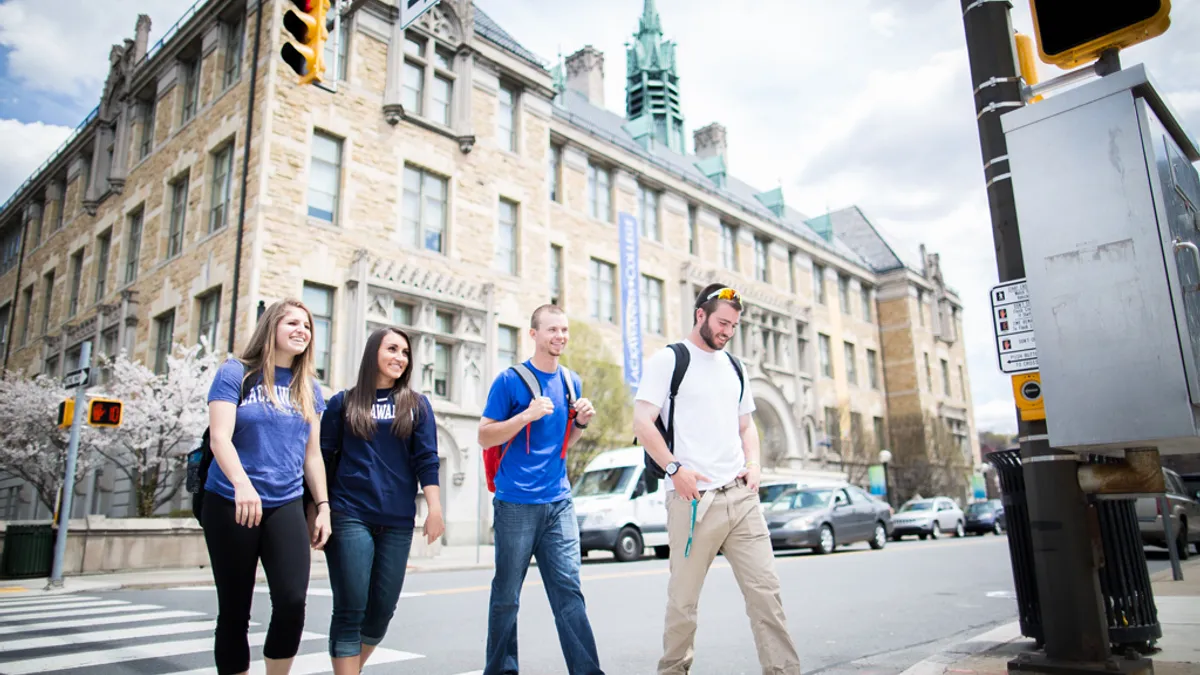In an effort to make college more affordable, some institutions are turning to an old — but seldom used — concept: income-sharing, that is allowing students to pay for tuition now with wages earned after graduation.
Lackawanna College in Scranton, PA, recently announced it will pilot an income-share agreement, or ISA, program in spring, with details yet to be worked out. Only a few thousand students throughout the U.S. use ISAs; Purdue University is the largest school to participate.
Income-share agreements ask students to repay school costs with a set percentage of their future earnings, say 1 percent to 2.5 percent, for a certain number of years. Those who are expected to earn more pay more. Those who earn only a floor-level salary, say $20,000 a year, might pay nothing.
Advocates say ISAs offer a lower-risk alternative to loans, which often accrue interest while students are in school and require repayment regardless of the graduate’s life circumstance or career success. They also require schools to put “skin in the game” — a concept that has been popular with President Donald Trump — because colleges take on some risk to help students graduate prepared for well-paying jobs.
ISAs: Easing college costs
Yale University experimented with ISAs in the 1970s. Now more colleges are getting on board.
“Income share agreements provide an opportunity to align our interests with those of our students, which fits perfectly with our mission to ease the burden of college costs,” Lackawanna College President Mark Volk said this week.
Lackawanna College is a private nonprofit institution focused on providing affordable pathways to careers in high-demand industries, such as allied health, business and criminal justice. Traditionally a two-year community college, the school recently added three bachelor’s degree programs and plans to add more next year.
Yearly tuition is $15,000, which still is a struggle for many of the school’s students to cover. The region around the college is economically depressed, thanks to the slowdown in coal production. Volk said virtually all of Lackawanna students qualify for some type of financial aid, with more than half eligible for full state or federal aid. About 80% of students commute, and more than half enter college needing remedial academic help.
Volk is hopeful ISAs will be a good option for some of students, but wants to make sure they don’t add any unintended financial hardships.
“I became president five years ago, and am always looking to find ways to help students get away from student debt,” he said. “The last thing I want to do is burden students with more debt.”
The college has slowly been building an endowment to offer financial gifts to students in need, but in the meantime it has been using funds from its operating budget to provide tuition discounts.
Often with ISAs, a college endowment fund will provide payment help and then collect the money later. Volk said he likes the idea, because students pay back according to how well they are doing financially, and the school may earn returns it can then use to help others.
But he added: “It’s our risk. Some students will pay back 100%, some students will pay back 0%. If I can get back 50% of what I am using now, I can offset that pot somewhat.”
Lackawanna will start small in spring, perhaps offering discounts of $150,000 through ISAs the first year.
“We will see if it works,” Volk said. “It could be one more arrow in our quiver of ways to fund education.”








